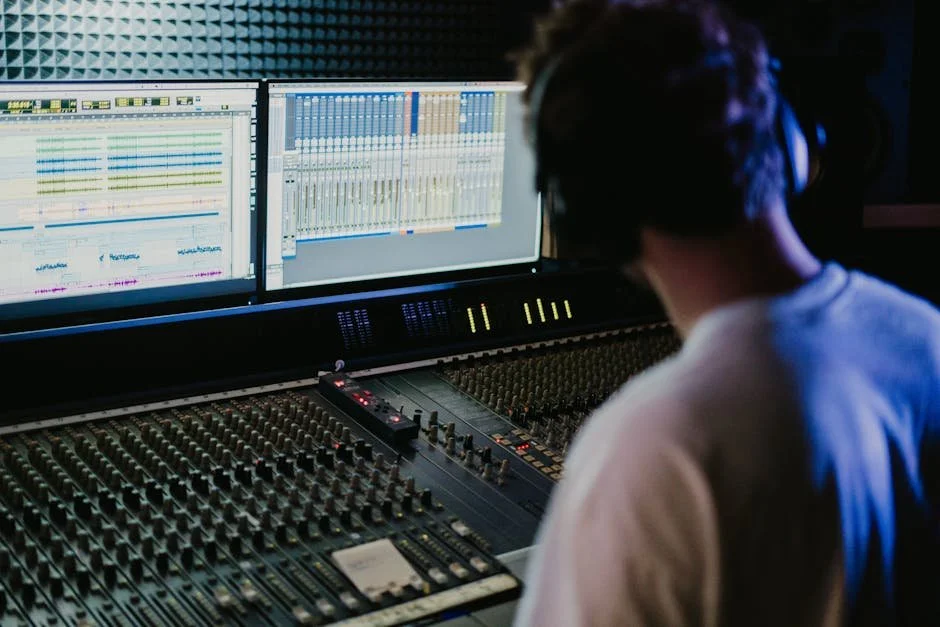How Do You Communicate Your Vision to a Mix Engineer?
Step 1: Understand Your Vision
When working with a mix engineer, the first step is to have a clear understanding of your vision for the project. Communicate what you aim to achieve with the mix, the emotions you want to evoke, and the overall vibe you envision. Clarity in your vision lays the foundation for effective communication with the mix engineer.
Understanding the technical aspects of audio mixing can also help in conveying your vision effectively. If you are well-versed in terms like EQ, compression, reverb, and panning, you can articulate your ideas with more precision. However, even if you're not familiar with the technical jargon, describing the sounds you like or dislike in simple terms can still be useful.
An anchor sentence to remember in this step is, "Your vision sets the course for the mix engineer to navigate." By establishing a clear direction from the start, you pave the way for a smoother collaboration and a more aligned outcome with your musical vision.
Step 2: Use Clear Language and References
When communicating with a mix engineer, it's crucial to use clear and concise language to describe your preferences. Avoid vague terms like 'make it sound better' and opt for specific descriptors such as 'brighter vocals,' 'deeper bass,' or 'more spacious ambience.' Clarity in communication minimizes misunderstandings and ensures your vision is accurately translated.
Referencing particular songs or albums can serve as a useful point of comparison. Mentioning that you like the drum sound in a particular track or the vocal effects in a famous album gives the mix engineer a reference point to understand your taste. Providing examples helps bridge the gap between verbal descriptions and auditory expectations.
Be specific about the time stamp in the song if you're commenting about a specific moment. For example: "At 1:23, I hear an electric guitar that overshadows the vocal". Also, quick tip: using language like "To my ears" or "I hear" go a long way in collaborative communication. They work better than definitive, blunt statements. Even if you're sure.
In this step, remember the importance of mutual understanding. The clearer you are in your communication, the more effectively the mix engineer can interpret and actualize your vision. It's a collaborative effort where transparency and openness play a significant role in achieving the desired result.
Additionally, be receptive to feedback and be willing to engage in a dialogue with the mix engineer. Effective communication is a two-way street. Encourage the engineer to ask questions if any part of your vision is unclear, and be open to their suggestions or insights to enhance the overall sound of the mix.
Step 3: Provide Examples and References
Sharing audio references is a powerful way to communicate your vision with a mix engineer. Whether it's a Spotify link to a track you admire or a soundcloud clip showcasing a specific effect you like, providing examples allows the engineer to listen and understand the sonic elements that resonate with you.
An essential aspect of providing references is to highlight the specific features you appreciate in each example. Instead of a general 'I like this song,' specify what aspects such as the drum punch, vocal clarity, or stereo width appeal to you. Detailed references paint a vivid picture of your preferences for the engineer.
Remember, music is a subjective art form, and everyone's interpretation of 'good sound' differs. By sharing diverse examples that encapsulate various aspects of your vision, you offer the mix engineer a comprehensive view of the sonic landscape you wish to create. Variety in references can enrich the creative dialogue.
Utilize online platforms or collaborative tools to share playlists, comments, or annotations on specific sections of songs. This interactive approach not only streamlines the communication process but also fosters a shared listening experience between you and the mix engineer. Embrace technology to enhance the conveyance of your musical vision.
Step 4: Encourage Open Communication and Feedback
Encouraging open communication and feedback is fundamental to a successful collaboration with a mix engineer. Maintain a supportive environment where both parties feel comfortable sharing ideas, voicing concerns, and suggesting improvements. Constructive dialogue leads to a more enriched creative process.
An anchor sentence for this step is, "Feedback fuels progress in the creative journey." Embrace feedback as a catalyst for growth, both for you as the artist and for the mix engineer. Through open discussions and a willingness to refine ideas, you pave the way for continuous improvement and a polished final product.
Remember that effective communication is not just about conveying your vision but also about listening actively. Value the insights and expertise of the mix engineer, who brings a technical understanding and a fresh perspective to your project. Collaboration thrives when there is a healthy exchange of ideas and a shared commitment to excellence.
Lastly, express your appreciation for the mix engineer's contributions and efforts. Acknowledging their work and dedication fosters a positive working relationship built on respect and mutual admiration. Recognize the collaborative nature of music production and celebrate achievements together as you bring your shared vision to life.

